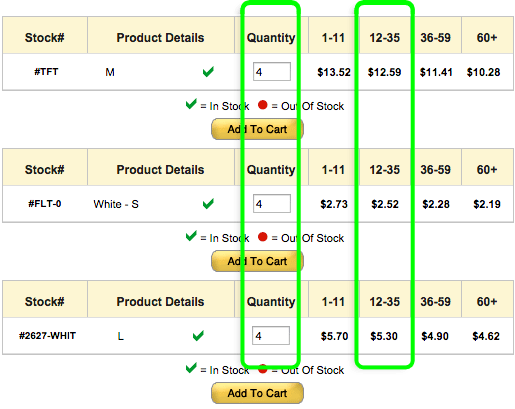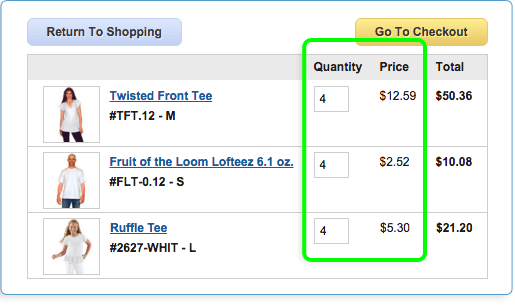Folks love to tie-dye but sometimes they don't come out as expected, and even seasoned tie-dyers can have an issue out of the blue. So to help you figure out what might be going on, we have made a list of everything we could think of to double check, as well as all the helpful hints we can think of from our decades of talking to folks. Dyeing is as much an art form as it is a science. There are many variables, most can be controlled, some not so much, depending on your situation. So check this out, and you'll be on your way to bright beautiful colors!
Fabric is very important! If you did not buy your dyeable garments from us, make sure they are 100% natural! (Cotton, Rayon, linen, hemp, or other NATURAL fibers) Polyester blends are everywhere, and they are cheap, but bright tie-dyes they do not make!
Pre-Wash your items - with HOT water Dharma Dyer's Detergent to make sure there isn't any fabric softener or other finishes on the fabric that can cause pale colors or spots. Even though clothing we carry is ready to dye, sometimes there is a softener used at the manufacturing level to prevent the fabric from getting needle holes as it is sewn - it makes the needle slide through the fabric better. Greasy fingerprints can even cause problems and garments are handled by many folks. There is no way to tell until you dye it so best to wash it first. More difficult fabrics like duck, linen, hemp or fabrics with more that can typically contain starches or sizing can be "scoured" to remove these things by adding Soda Ash to your pre-wash along with the textile detergent. Pre washing is one of our #1 recommendations!
Use the Soda Soak Tie-Dye Method instructions, also on pg. 9 in our catalog, if you want to do tie-dye with multiple colors like the pros. The Tub Dye Instructions should only be used if you want to tie-dye with only one color. The Cold Batch Method instructions are for using thickened dye like a paint. We know it can be confusing for beginners, but there are just SO many ways to use this dye!
Using freshly mixed & fresh dye is important! - Mix up your dye right before you are going to use it (the night before is ok too) - the longer it sits in the water, especially in warm or hot weather, the quicker it gets weak. It gets weaker and weaker as more time passes. For best results, we recommend mixing up no more dye than you can use in 2-3 days. Storing in the refrigerator can extend the life of your dye liquid and many colors can last a couple weeks if stored cold in between uses but make sure it is properly labeled and sealed so no one will drink it!
- Pro Tip - Most dyers don't throw away old colors - they test them and then use them when they need that color that the dye is at that time. Also, older Fiber Reactive Dyes can be still be used like an Acid Dye with vinegar on silk to yield some very nice colors.
Dye powder can be hard to dissolve - Paste up your dye before adding the bulk of the water. A glass measuring cup with a spout works good - paste it up with some lukewarm water in which you have already dissolved Urea. Use a spoon, working it into a paste and mashing up the clumps if needed with the back of a spoon, just like you would flour if you want lump free gravy. As you are stirring/mashing up your dye paste, gradually add the rest of the Urea water while stirring until you have the full amount for the squeeze bottle. Use a funnel to fill the squeeze bottles. This way there are not lumps of undissolved dye that might plug up your squeeze bottles, and you are far less likely to get "freckles" of undissolved dye on your tie-dyes. Some dyers take the extra step of straining some of their colors through cheesecloth or better yet, a fine stainless steel mesh sieve to ensure no little chunks escape.
- Pro Tip - Urea is good stuff! If you aren't using Urea try adding that to your dye process per our tie-dye instructions - it helps dissolve the dye better, and helps keep the fabric wet during the curing process. It's absolutely key when using he dyes for painting or screen printing.
Don't let your tie-dyes dry out while curing (it causes the chemical reaction, that makes the dyes permanent, to stop!) - keep them covered with plastic, or in zip type plastic bags, and try Urea in your dye mixtures, especially in hot and/or dry climates. Cover tie-dyes and keep somewhat warm when curing - if in a cooler environment, leave for 2 days instead of 1 - you will get the best, brightest colors when curing in warmer temperatures(70ºF and up) - the warmer the brighter. This is why some folks get faded colors when tie-dyeing in the winter or in an air conditioned area in the summer.
- Pro Tip - cover your tie-dyes with a thin black/dark plastic or a tarp for curing out in the sun; this can really cut down the curing times and the increased warmth makes the dyes happy. Pros have been known to apply electric blankets over the plastic in the winter. All kinds of solutions to this one.
Time is your friend - 24 hours is best! - The dyes take time to bond with the fabric. You want to give them time to do their job. We recommend 24 hours minimum for the best and brightest colors; giving the dyes enough time to "fix" also makes the rinse and washout much easier. If you are ice dyeing, we recommend 48 hours for best results because the dyes need time to react at room temperature to deliver their most vibrant color!
Rinse and washout - is one of the most important parts of the instructions! If after washing, the white background that is left on the tie-dye looks pink or light blue or "muddy", or your light colors (like yellow) are muddy looking, the rinsing and washing technique is usually the problem. While still tied, rinse off soda ash and excess dye under cold running water, then keep rinsing while you untie, until the cold water runs fairly clear. Keep each item separate, don't stack them onto each other. In fact, add the rinsed items right after rinsing to a pre-filled washing machine that contains HOT water and Dharma Dyer's Detergent. Don't wash too many items per load, as the hot water is going to remove a lot more excess dye, and if you have too many items, even the Dharma Dyer's Detergent won't be able to handle it. (hint - if the water starts looking really muddy, drain and refill with fresh HOT water and Dharma Dyer's Detergent before starting the wash cycle.)
Troubleshooting
Too much white on your finished tie-dye - Make sure you are applying enough dye and make sure you are getting the tips of the squeeze bottles into the folds; also make sure the fabric isn't tied or folded too tightly.
Colors running together - How wet is your fabric? Applying dye to fabric that's sopping wet will produce a very different effect than if the fabric is only slightly damp - this is especially true with the mixed colors. If the dye is applied to very wet fabric many dye colors will separate or be diluted when they hit the fabric.
Colors too dark - Remember that the color chart represents solid color dyed fabric. The Basic Tie-Dye recipe was created to produce super bright/intense colors and it's basically a starting point. You may need to use less dye powder to get the exact color/shade that you want.
Dyes bleeding here you don't want - Is your dyed fabric sitting in a puddles of dye? Put something absorbent under the fabric and make sure you are not applying too much dye. Be sure your ties/rubber bands are tight enough. If rubber bands aren't working for you, try sinew or tie-dye string, which is what a lot of the professionals use, or the reusable zip ties.
-
Pro Tip You can also place your tie-dyes on plastic coated or stainless steel racks so they don't sit in puddles. Cover with plastic to be sure they don't dry out!
Colors 'splitting' - most of our dye colors are mixes made up of more than one dye color. If your fabric is too wet, mixed colors can split up and you will see the colors in the mix rather than the intended color. To minimize color splitting, first make sure you mix the colors as directed. second, wring out your fabric very thoroughly before applying your dye. You can also try adding thickener to keep the dyes from spreading on the fabric, which can make colors within a mix become visible.
- Pro tip - If you want to avoid color(s) splitting completely, you can choose to work with just the pure MX colors.
Pale Colors - the pH of the fabric you are putting the dye on is very important: Make sure your are using the right fixative (We truly don't want to insult anyone, but don't forget the fixative either!) - the Dense formula of Soda Ash if you got it locally - if it is not, test your ph as below to make sure you are using enough.
Make sure you haven't accidentally bought Sodium Bicarbonate (baking soda) instead of Sodium Carbonate (Soda Ash) if you got it locally as a pH raiser. If you have employees (for you professional dyers), make sure they didn't accidentally pre-soak the shirts in Urea water (or something else) instead of Soda Ash water - yes, it's happened! Do a pH test if your colors are coming out pale - the soda soak water needs to be 10.5 or higher. Soda ash that is very old or has been stored improperly may lose its alkaline properties.
- If you are soaking LOTS of stuff in the soda ash solution, the pH can gradually go down from the slightly acidic fabric - you can check the pH and add a bit more soda ash if necessary.
- If using the washing machine to spin out extra soda ash solution check to make sure water is not released during the spin cycle or it will rinse out at least some of the soda ash and make spots. Test your machine by putting a dry shirt in the spin cycle, if it gets wet you shouldn't use it.
- If the fabric is too wet, it leaves less room in the fabric for the dye. Be sure to wring everything thoroughly after the soda ash soak.
- If the fabric is too dry, the soda ash can form a crust that actually prevents the dye from soaking into the fabric - it also lets the soda ash dry into a fine powder that is easily airborne and can be an irritant. If the soda ash has dried on the fabric you can re-wet it with a light spray of more soda ash solution.
- Pro Tip - Pre-soak the fabric in the soda ash several hours or the evening before you are going to apply the dyes. We've found that the sweet spot is right between damp and dry.
Temperatures are very important: Paste up the dye with LUKEWARM water (98-105ºF), like a baby bottle. NEVER use hot water.
Hot water can be a problem using hot water to mix up the dye powder can cause some colors to bond with the hot water and don't want to let go and bond with the fabric. Just like when the dyes have been mixed up too long. So more of your color will wash out in the end, on rare occasions, all of it, when you use hot water to mix your dye instead of warm, as suggested.
Cold water is a problem with some colors. It is more difficult to dissolve dyes in cold water even with Urea. You may end up with undissolved dye in the bottles. Some colors, like our PR13, can sometimes congeal if left in cold water or if they sit overnight. If your dye starts getting thick you can put your squirt bottle in a pan of hot tap water to warm it up or add a bit of strong rubbing alcohol and shake/stir vigorously. If you are ice dyeing, remember that the dye colors begin to react (bond) with the fabric best only after the ice has melted and the fabric has come closer to room temp, so plan your batching time accordingly.
Age and storage of dye powder - For best results, make sure your dye powder is less than 2 years old and has been stored in a cool dry place, tightly closed. Make sure your measuring spoons are dry before dipping into the dye powder. Older dyes get duller very gradually, some colors faster than others. Mixes can shift a lot too as they get older. Also, don't leave dye powder lids open while you are doing other things. Dyes exposed to humidity go bad FAST! Dyes exposed to high temperatures in storage also age much more rapidly. Dyes bought from retail art or craft stores can be really old from sitting in warehouses, then on shelves, for long periods of time. Dharma Fiber Reactive Dye is fresh, strong and vibrant when you buy it direct from us!
Water quality can make a difference - Check if you have hard water - this can really dull colors! "Well" water is often very hard. If your water is hard, you should use water softener or get distilled water to dissolve your dyes. Chlorine and other chemicals in your water supply can affect colors - we've had folks who travel all over selling their tie-dyes say that some colors come out different from city to city depending on the water! Heavy chlorination can even kill some of the blues.
Muddy Colors after washout :( Some dyers find that their shirts/fabric looks better before they put it into the wash. If you notice muted "muddy" dye colors after you wash out your tie-dyes it means that the fabric wasn't rinsed well enough or or there was too much fabric (too many garments) in the washing machine at the same time. Using a dyer's detergent will help prevent excess dyes from landing back on the fabric in the wash but they can only do so much. Rinsing is really important - you want to get rid of as much excess dye as possible before the fabric goes into the hot washing cycle. We recommend putting no more than 8-10 adult (size medium) T-shirts into a large washing machine load (this will vary depending on your machine size!!)
- Pro Tip - Waiting at least 48 hours before rinsing and washing can make a huge difference! After 24hors the dyes will have done most of their work on the fabric but they can still be fairly potent - this means that they can stain stuff when they get loose in the wash. After 48hrs they will have lost a lot of their potency and will be less likely to "back-stain".
- Pro Tip (optional) - some dyers find that adding a cup of plain White Vinegar (not cleaning vinegar) to a rinse or final wash cycle can help prevent back-staining. We recommend you experiment with any and all of these suggestions.
We apologize if that was more than you wanted to know! But if you are still having trouble, or confusion, give us a call or send us an email! We have live persons here at Dharma who answer the phones and emails M-F, 8-5 Pacific Time and we are happy to help!!! (800) 542-5227, or service@dharmatrading.com












